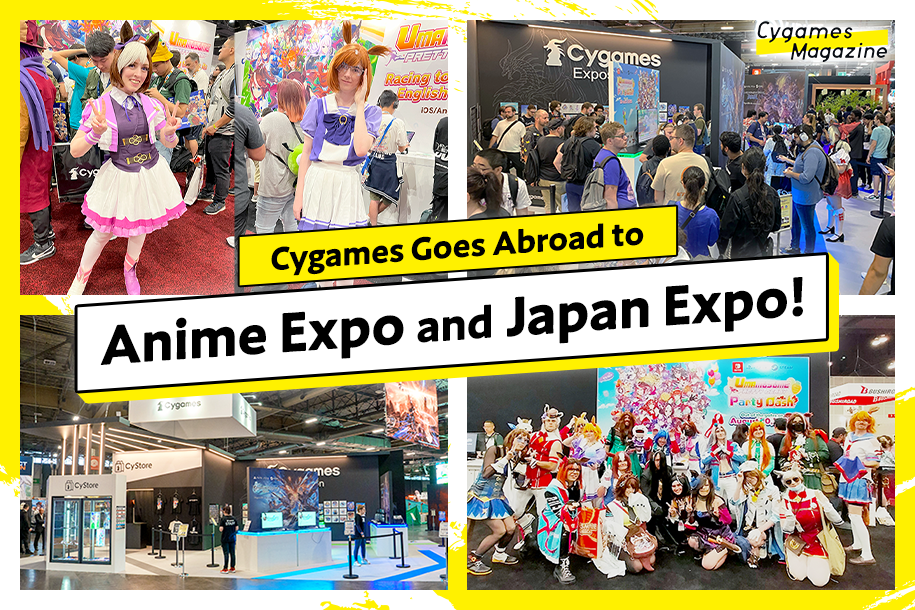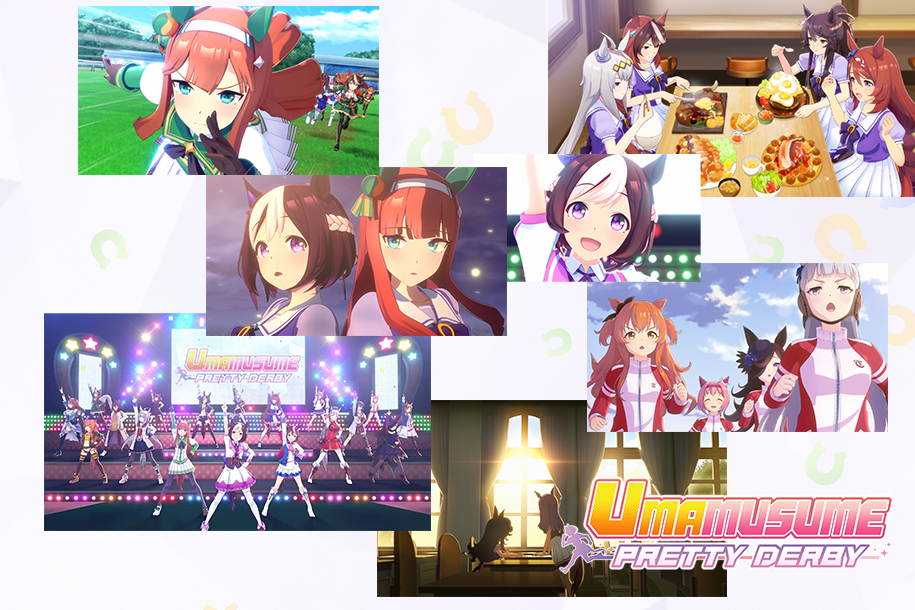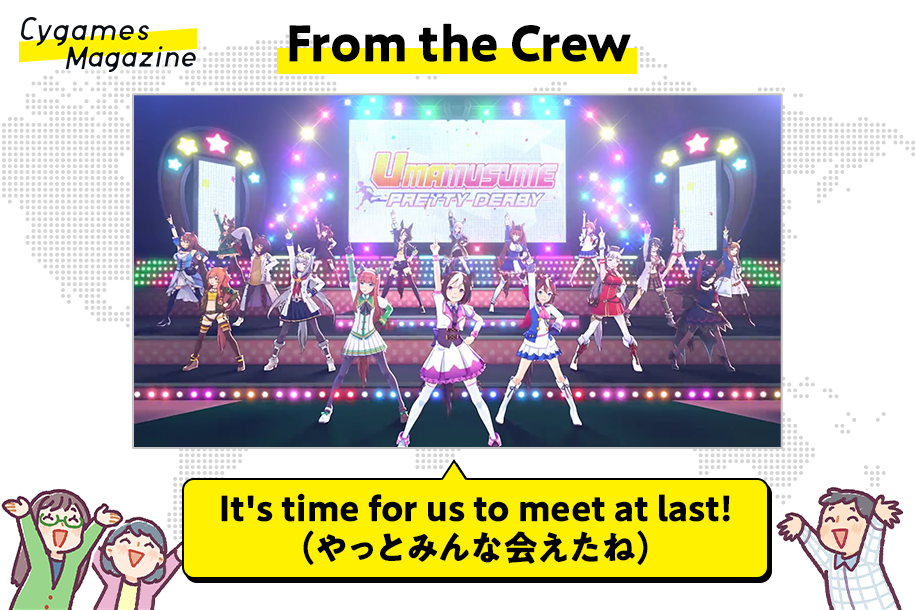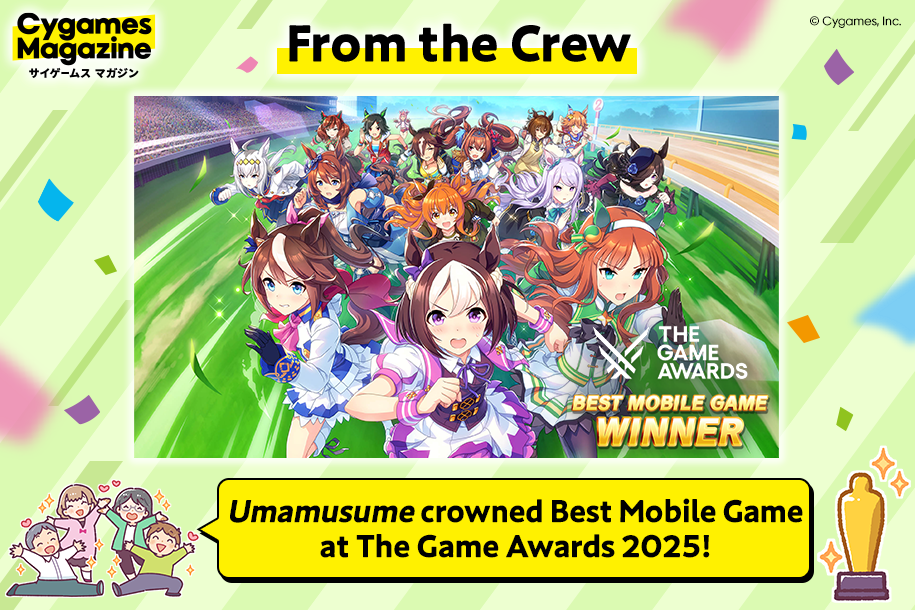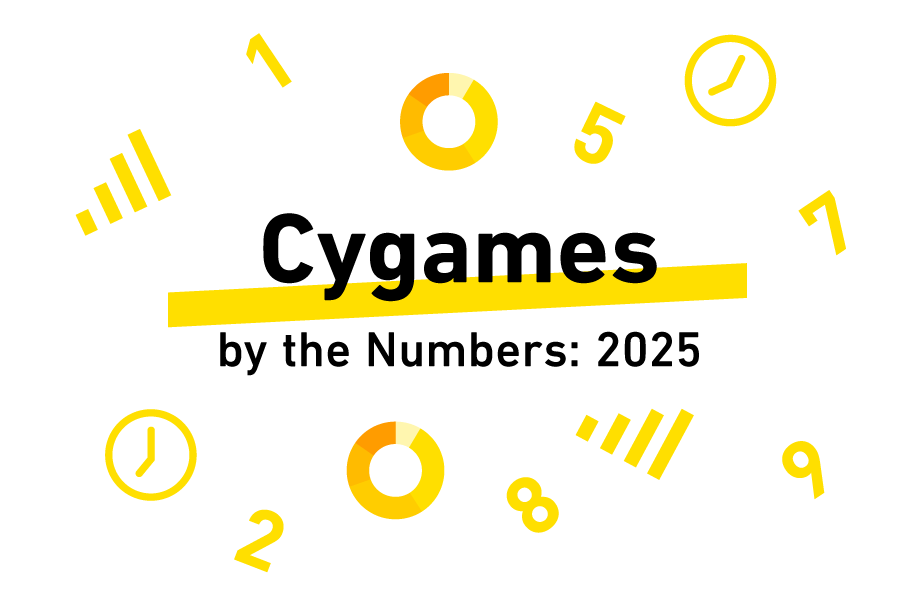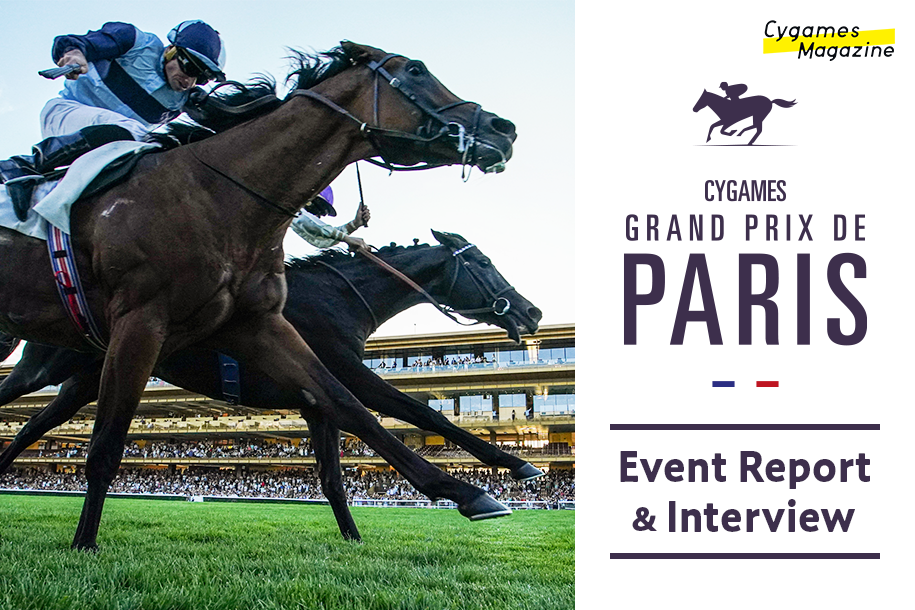Umamusume Featured in an Exhibit at Kentucky Horse Park!
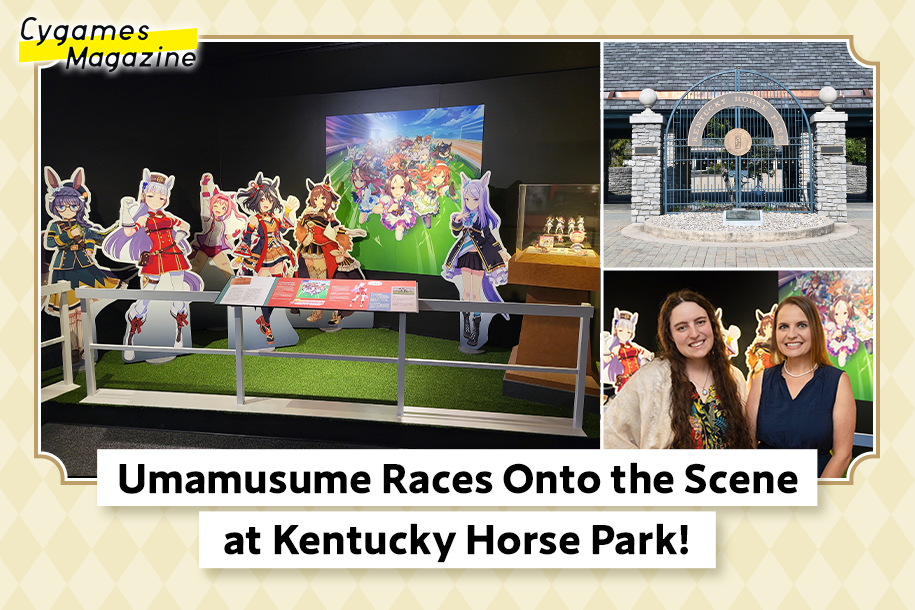
Uma no Kokoro, an exhibit celebrating Japanese equestrian history and culture, is now on display at the Kentucky Horse Park (KHP) in Kentucky, USA, until 2026, January 4, and features Umamusume: Pretty Derby as part of its section on horse racing in Japan.
In this article, we go into detail about the exhibit and bring readers an exclusive interview with Emily Lozon, Umamusume fan and director of the KHP International Museum of the Horse, where we ask her about the story behind Umamusume’s inclusion in the exhibit, what makes it special, and her personal thoughts on the project.
Kentucky Horse Park Official WebsiteA Walk Through Kentucky Horse Park: Showcasing the Connection Between Man and Horse
First opened in 1978, KHP is a sprawling 495-hectare tribute to humanity’s enduring bond with horses—a unique blend of state theme park, international equestrian hub, and living museum.
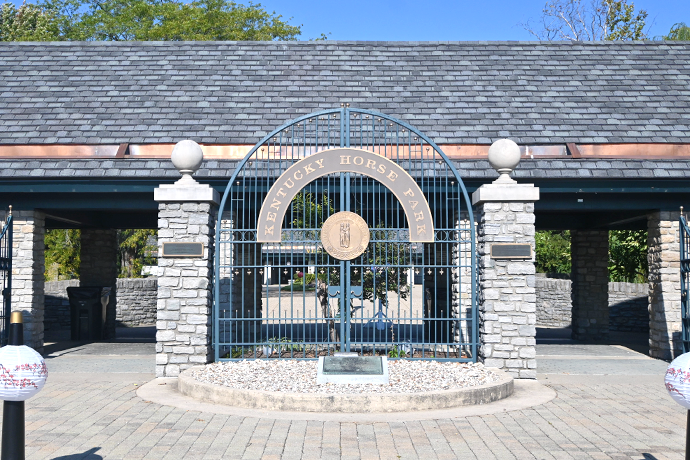
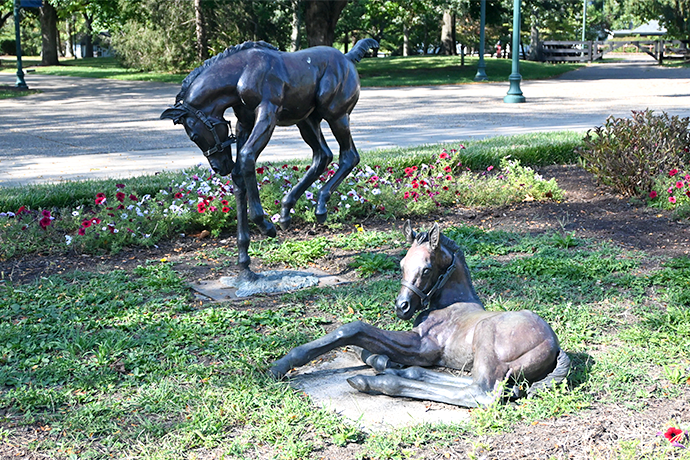
Drawing over a million annual visitors, the park is home to many legendary racehorses from the sport’s past, and also hosts the International Museum of the Horse, the outdoor Rolex Stadium, and a collection of equine attractions on its grounds.
Among those attractions is the Uma no Kokoro exhibit, which features a glimpse into Japan’s equestrian culture. Displayed in the International Museum of the Horse, the exhibit includes an introduction to Umamusume as a facet of Japanese pop culture connected to the sport of horse racing.

Uma no Kokoro: A Trot Through the History and Culture of Japanese Equestrianism
True to its name, Uma no Kokoro (“Heart of the Horse”) focuses on Japan’s multifaceted relationship with horses, exploring the connection between them through various lenses—spirituality, culture, military, and sport. Presented in both English and Japanese, the exhibit is accessible and inviting for local and international visitors alike.
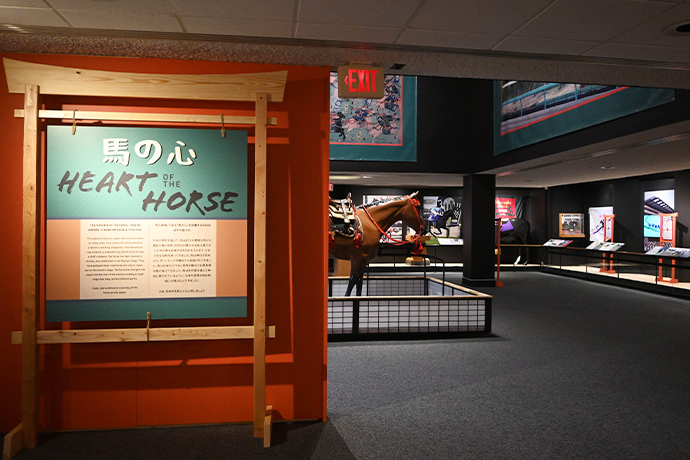
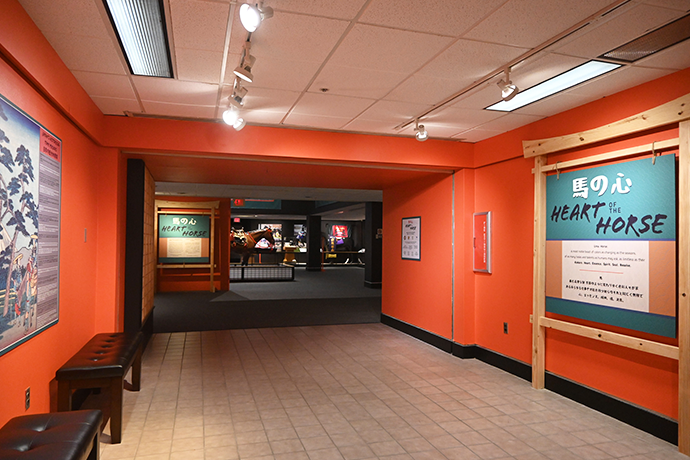
Exploring the History
Visitors are first greeted by a space introducing Fukushima Prefecture’s Soma Nomaoi, a horse-riding festival recognized as an Important Intangible Folk Cultural Property in Japan. The space features sacred flags from hosting shrines and cavalry helmets, as well as footage and explanations of Shinki Soudatsuten (Sacred Flag Competition), transporting guests straight into the heart of Japan’s equestrian heritage.
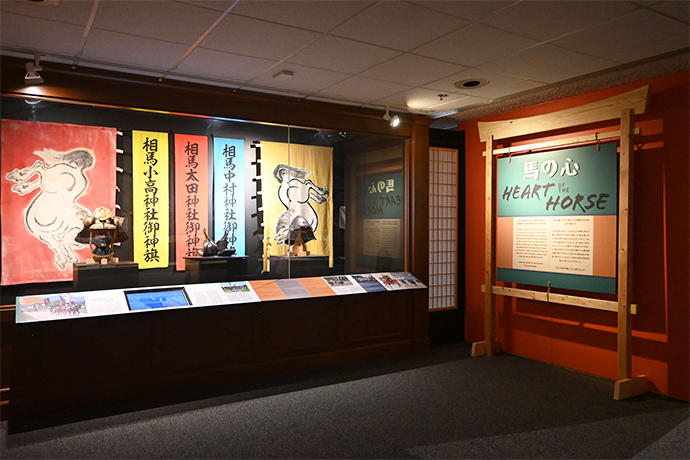
To the right of the exhibit’s entrance is a section covering the history of humans and horses in Japan spanning from the 5th to 18th centuries. Through showcasing clay haniwa horse heads, folding byobu screens from the Edo period, wooden saddles, and armor the display reveals the diverse roles horses played in Japanese history.
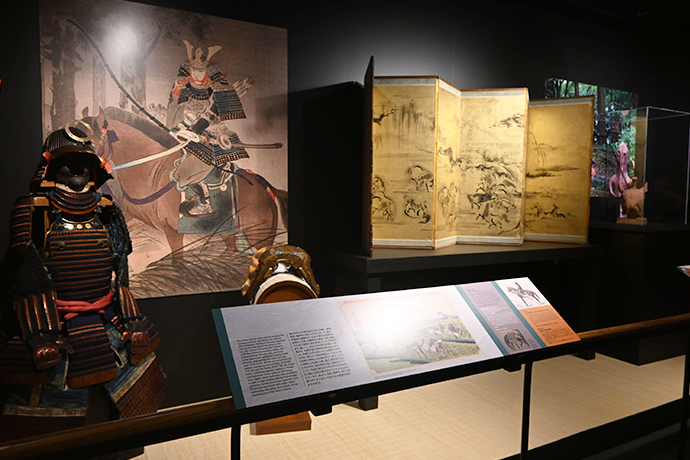
Understanding the Culture
Following the history of horses in Japan is an area that explores their spiritual significance in Japanese culture and Shinto practices, illustrated through a panel on the origin of ema (lit. picture horse) plaques.
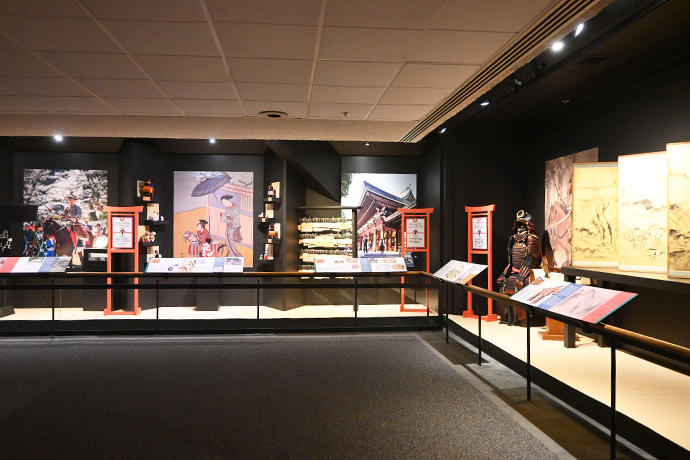
Nearby is a corner displaying various regional horse-themed handicrafts, including Miharu-koma from Miharu in Fukushima Prefecture, Yawata-uma from Hachinohe in Aomori Prefecture, and Kinoshita-goma from Sendai in Miyagi Prefecture. Behind these pieces is a warm and endearing ukiyo-e depicting a horse by Suzuki Harunobu.
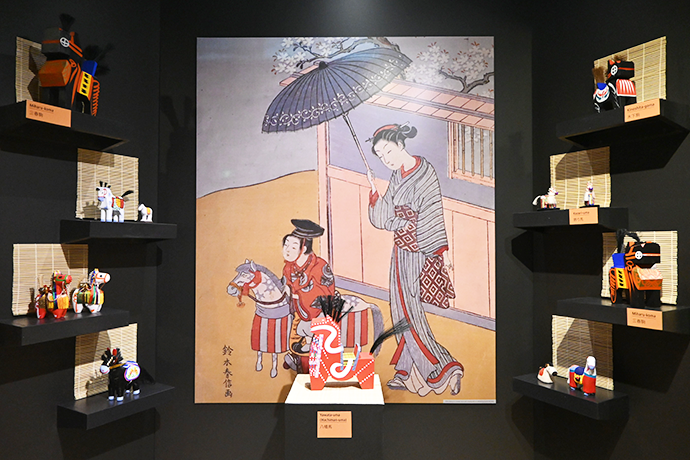
Rounding off the area is a section highlighting traditional horse festivals and ceremonies across Japan. Next to a display of a hanpen jacket worn by horse handlers is a panel explaining Chagu Chagu Umakko, a festival named after the sound of ringing bells from Morioka in Iwate Prefecture. The panel also goes into detail about Hachinohe Sansha Taisai (Three Shrine Festival) and Yabusame mounted archery, offering a thorough overview of the roles horses have played in these celebrations.
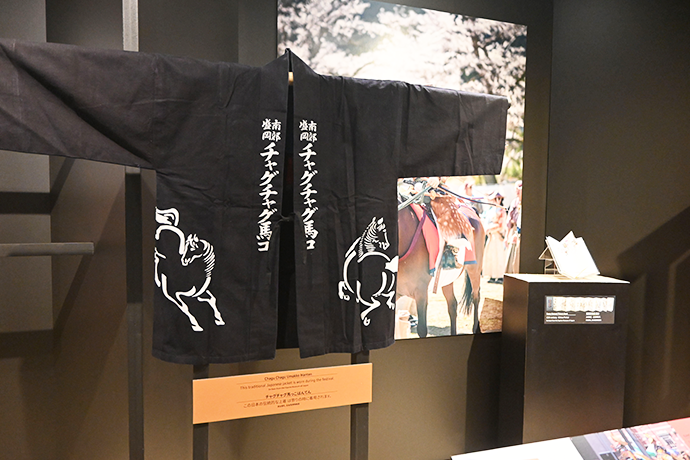
Off to the Races
This area covers the exhilarating world of Japanese horse racing, starting with the introduction of Western-style racing during the Meiji period. Racing memorabilia such as Mejiro McQueen’s 1991 Tenno Sho (Spring) winner’s sash, Orfevre’s Japan Derby sash, Gentildonna’s 2012 Japan Oaks winner’s blanket, and various trophies are among the many rarities on display.
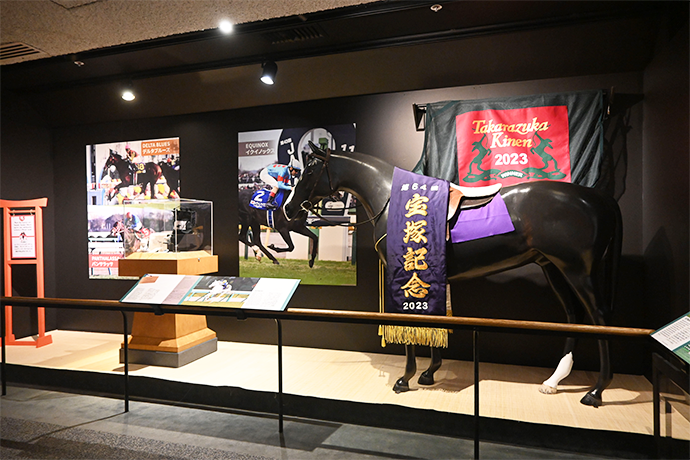
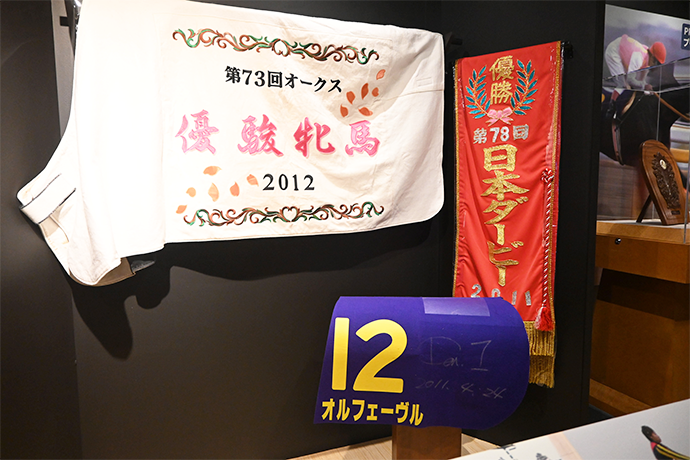
Tucked into this section is a vibrant exhibit featuring Umamusume, where the worlds of traditional horse culture and modern pop culture come together. Complete with English trailers playing on screens, promotional art, character standees, and colorful merchandise, this exhibit is a must-see for younger visitors.

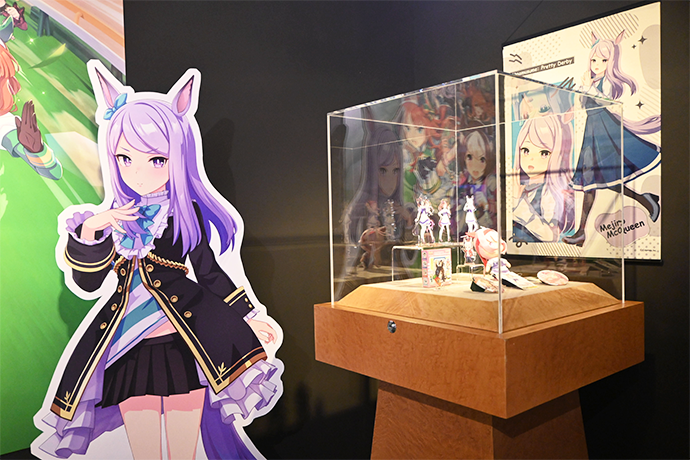
With its vivid colors and dynamic visuals, the Umamusume section stands in contrast with the other areas, piquing the curiosity of many visitors with the content on display. Residents of Lexington (where KHP is located) familiar with anime culture were drawn to the display—especially younger guests. When asked for their thoughts on the exhibit, visitors were impressed with its novel and interesting concept.
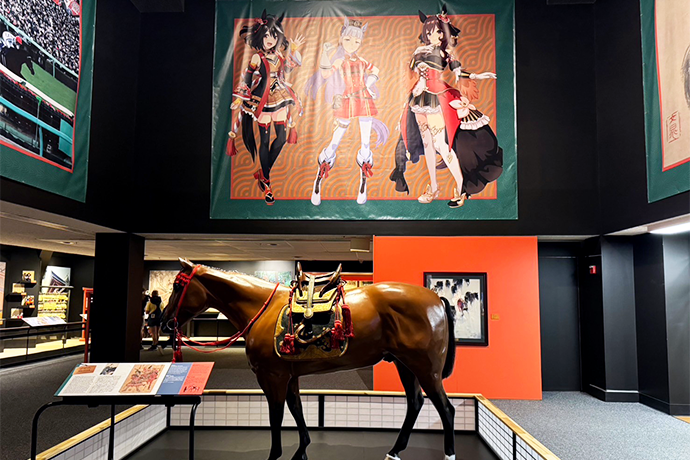
Chatting with the Museum Director
and Haru Urara Fan—Emily Lozon
We interviewed Emily Lozon, director of the KHP International Museum of the Horse and key figure behind Uma no Kokoro to get her thoughts on the exhibit and Umamusume.
- Director of the International Museum of the Horse at KHPEmily Lozon

- As director, Emily Lozon oversees exhibits, educational programming, artifact collection, archives, staff, and daily operations at the museum.
First, could you tell us what inspired the museum to showcase Japanese horse racing?
In 2023, Noa (Curator of Exhibits for the International Museum of the Horse) asked if she could create an exhibit about Japanese racehorses, and I thought it would be a great topic. Our staff spent the past couple of years re-designing the entire museum, and we just finished the first round of renovation.
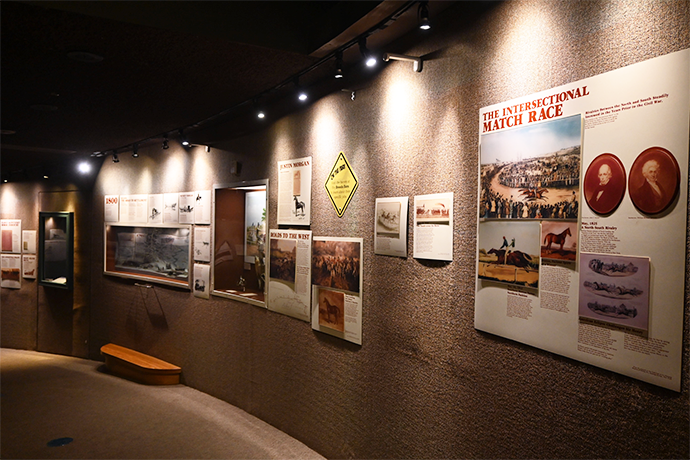
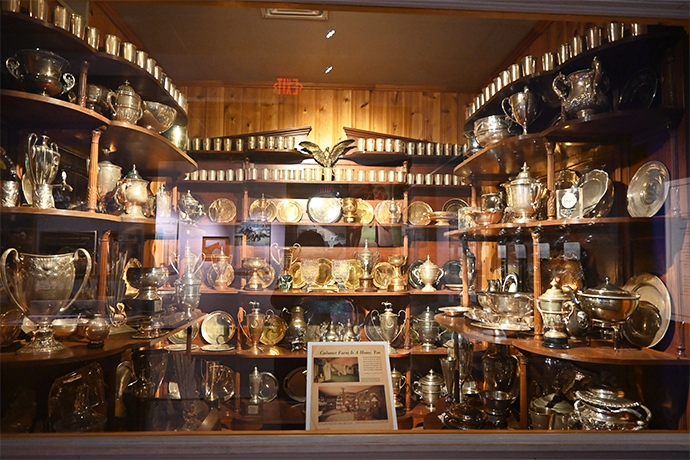
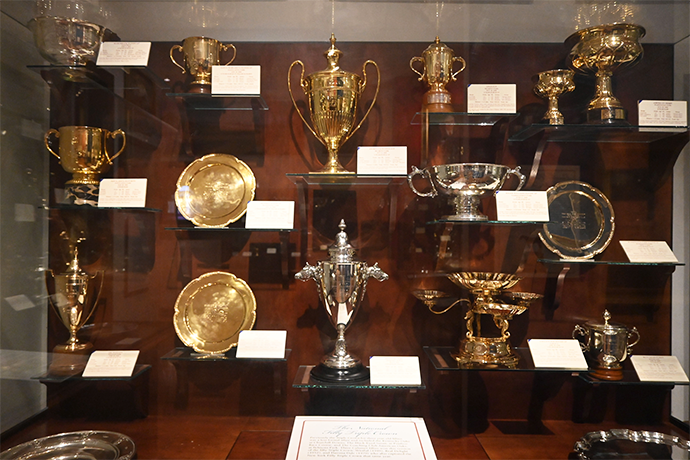
Our mission is to celebrate the connection between horses and humans across history and the world, so I figured a brand-new international exhibit featuring a country with a deep connection to horses and an increasing number of worldwide champions would be the perfect fit for our mission and as a celebration of our newly renovated spaces.
One of the themes we are introducing into our exhibits is that horses find their way into our everyday lives. Humans have always made connections with horses, even without owning, riding, or seeing a living horse. Umamusume is the perfect example of this idea, as it introduces the world of horse racing to a different audience.
We heard that you’re a fan of Umamusume. How did you find out about Umamusume, and what was your first impression of the series?
I thought it was great! Our Curator of Exhibits, Noa Leibson, introduced me to the anime. I was unfamiliar with Japanese racing and anime alike at the time, but Noa is an avid gamer and anime fan. I was drawn to the cute characters and the idea of how those characters were inspired by real horses.
I watched the show first, and more recently was able to download the English version of the game. The show is enjoyable and well-crafted, with great storytelling that shows complex, relatable characters. I am very impressed with how well-researched the series is, with stories and characters that accurately reflect their real-life racing inspirations. The game has been so much fun to learn and play, and I love seeing all of my favorite characters. I think Umamusume brings horse racing to life in a fresh and inventive way, which makes it relatable to a wide audience.
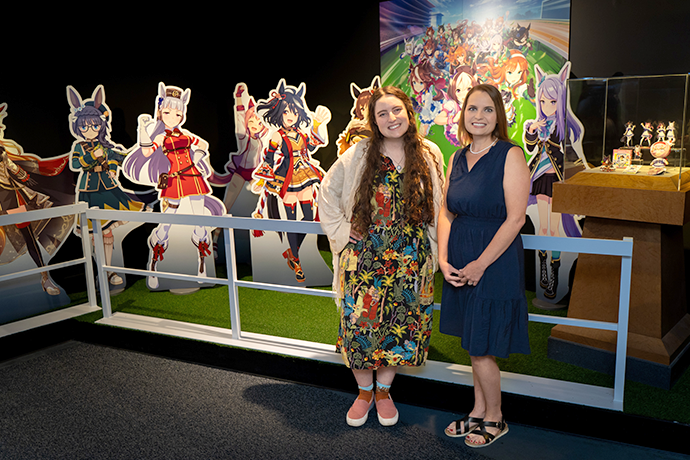
Who is your favorite Umamusume character, and why?
Haru Urara is my absolute favorite, although I am fond of Gold Ship too.
When I started watching Umamusume, her cheerful spirit and optimism resonated with me. I think her determination in continuing to compete and never losing hope despite the overwhelming odds is admirable as well. Haru Urara is also a great team member.
As for Gold Ship, her antics are so funny, especially since you really need to pay attention to the show to notice her in the background sometimes. It’s so clever.
What do the museum staff and local horse racing fans think about Umamusume?
Our staff watched the show together and we all have favorite characters and episodes now. Most of them (I think everyone but me!) were already anime fans. We haven’t incorporated pop culture into an exhibit before, at least not to this scale, and it was a good experience for us.
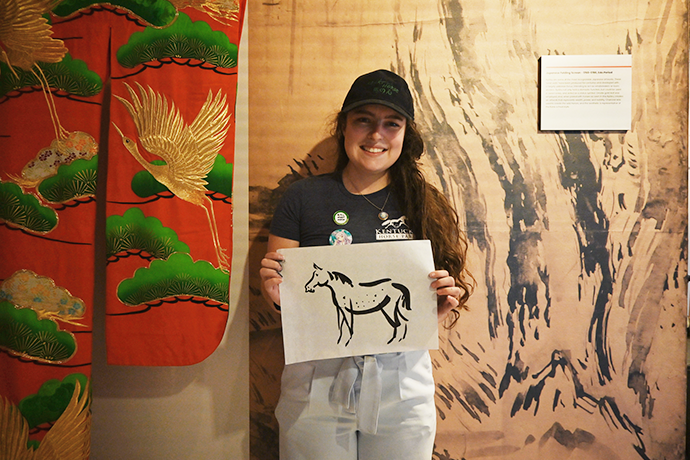
It seems many people locally are unfamiliar with Umamusume, although we have seen interest from anime groups and clubs. Our visitors are enjoying it as well, and we have received positive feedback on the exhibit.
What hopes do you have for pop media like Umamusume in regards to horse racing culture?
I hope it challenges the idea that horses and racing are exclusively for the elite or wealthy and opens up the sport to a broader audience. Because of Umamusume, we’ve seen new fans and supporters express an interest in the sport who might have never considered it otherwise. Moreover, the positive impact of Umamusume and Cygames on raising funds for retired racehorses is truly encouraging. As the fanbase grows, I’m hopeful that this support will continue and potentially expand, benefiting the welfare of horses beyond their racing careers.
What message do you want visitors to take away from the exhibit?
My ultimate goal is for our visitors to walk away from the museum having learned something new and memorable about the relationship between horses and humans. Specifically, we hope visitors will gain a deeper understanding of the profound impact horses have had on Japan and its history. Of course, I want them to enjoy themselves too!
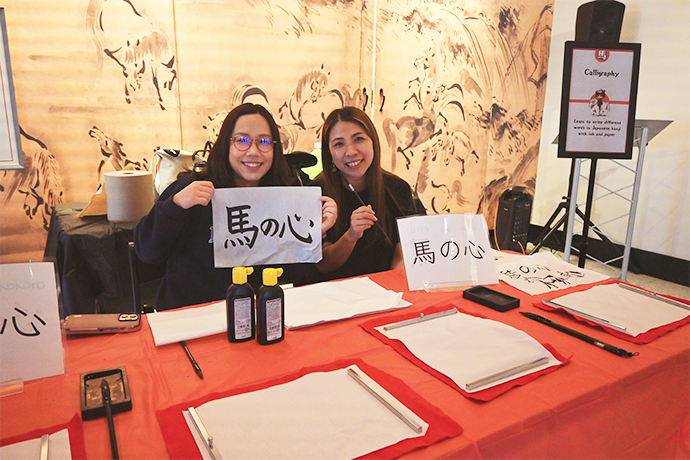
Is there anything you’d like to tell the Umamusume players reading this?
We appreciate them! Their passion and dedication to the game, the popularity they helped create, made it possible for us to include Umamusume. We sincerely hope they’ll enjoy it as much as we do. We would be thrilled to welcome them to our museum, where they can see how the game and show fits into the broader context of horse racing and horse history. This exhibit section is a celebration of the Umamusume fandom, and we hope many players can experience it firsthand.
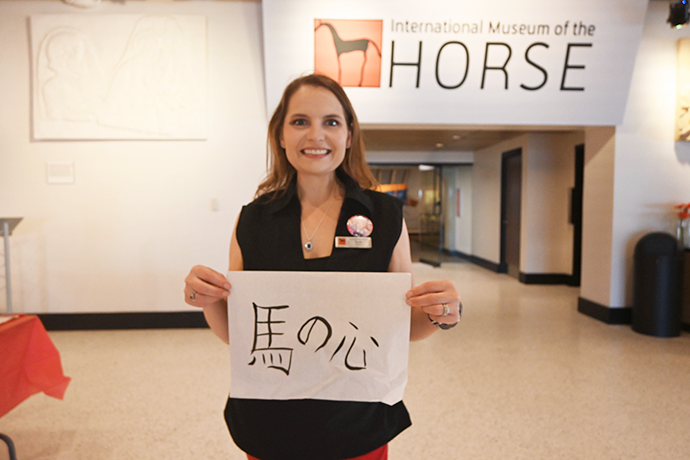
Impressions from the Umamusume Team
Lastly, we asked a member from the Umamusume team in charge of this project for their thoughts on the exhibition.
How did you feel when KHP first reached out to the Umamusume team about this exhibition?
Umamusume’s based on modern horse racing culture in Japan, so while it’s quite embarrassing to say as the project lead, I didn’t have much knowledge of the international scene when we were contacted about participating in KHP’s exhibit. So I did my research, and all of the information I found on KHP—when they first opened, their history as a theme park, the sheer size of their grounds, their renowned museum—was truly awe-inspiring. To be honest, I was shocked that such a respected institution would approach us to take part in their exhibit. But given our standing plans to expand the series overseas, I saw it as an opportunity that we couldn’t pass up.
At the time, I remember being curious as to why they’d want to include Umamusume in their exhibit. Then I talked to Emily, who had purchased Umamusume merchandise while in Japan, and it all started to make sense. Learning that someone at KHP was a fan of Umamusume was definitely a happy surprise.
What did you think about the exhibit?
In many ways, it was extremely eye-catching (laugh). The International Museum of the Horse highlights the history between man and horse as well as horse racing from ancient to modern times, so the Umamusume corner, with its multicolored visuals and digital content, comes off drastically different from almost everything else in the museum. The enormous poster just above also adds considerable impact to the already plenty impactful display.
But as amazed as I was by the display, I was even more honored that the people at KHP would consider featuring Umamusume in their exhibit on Japan’s horse racing and equestrian history. Without the horse racing industry’s support and the care the Umamusume team puts into creating content that honors horse racing’s storied legacy, I don’t think we’d have been able to participate in this event. I noticed many diverse elements in the museum’s exhibit, but what stood out to me most was the thread that brought everything together—our shared love for horses.
Do you have anything you’d like to say to fans of Umamusume?
We recently launched the English version of Umamusume on June 26, and would like to extend our heartfelt thanks to all of the fans. Without your love for the series and interest in horse racing culture, Umamusume would have never been able to make its debut on the global stage. We on the Umamusume team remain committed to elevating the heritage of horse racing through compelling interactive experiences and hope you’ll continue to support us as we work to deliver content that resonates with audiences all over the world.
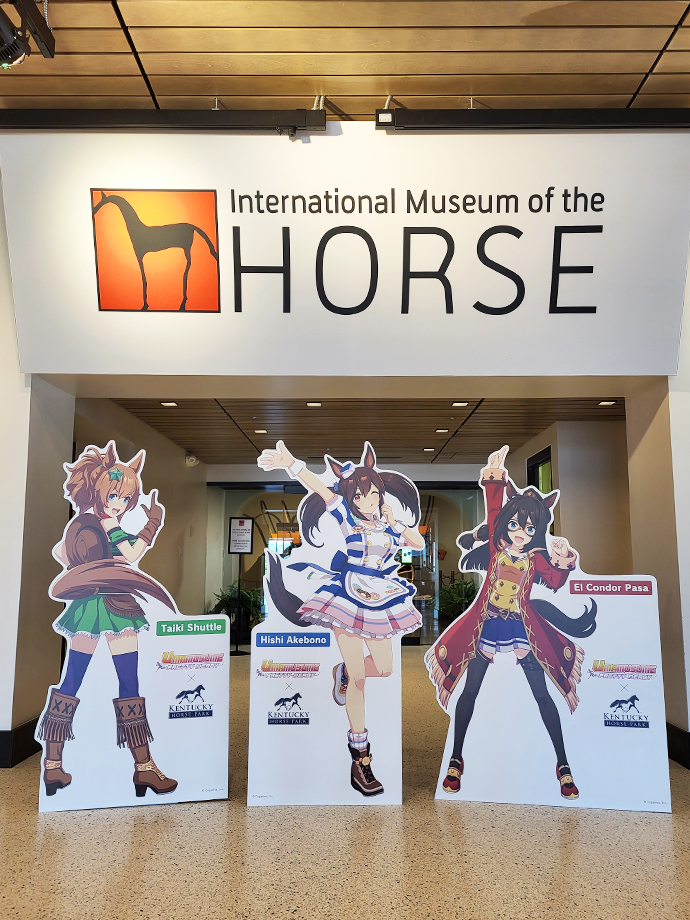
And that wraps up our report on the Uma no Kokoro exhibit at KHP!
The Uma no Kokoro exhibit will be open until January 4, 2026. Guests are welcome to view the permanent exhibits introducing the evolution of horses and their relationship with humans as well during their visit.
Be sure to stop by the KHP International Museum of the Horse on your next trip to Kentucky!
Overview of “Uma no Kokoro”
● Location
Kentucky Horse Park International Museum of the Horse, Lexington, Kentucky, USA
● Duration
Open now until Sunday, January 4, 2026
Please check the official website for business hours and regular holidays.
● Admission Fee
Admission to the Kentucky Horse Park includes access to the exhibits.
During the main season (March 19 – November 2, 2025), prices are as follows.
Adult (ages 18+): $28
Senior (ages 62+): $23
Student (ages 5-17): $14
Children (ages 4 & under): Free
From November 3, winter season prices apply. Please check the official website for details.



